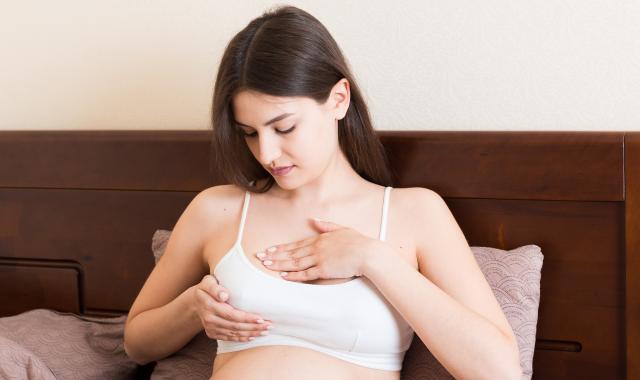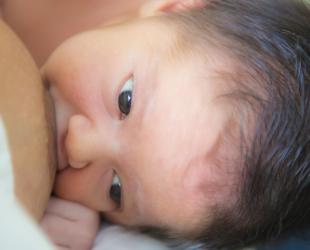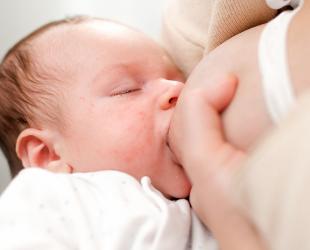Still have sore nipples even though your baby latches well? It could be an infection.

What is the difference between sore nipples and a nipple infection?
Sore nipples are often caused by attachment issues. Once you fix the cause, the pain usually goes away. Sometimes, nipple pain continues because of an infection.
You might have a nipple infection if:
- Your baby is attaching and feeding well, but you still have nipple pain after the first week.
- The pain starts after you’ve been feeding comfortably for a while.
- Other causes, like tongue-tie, have been ruled out.
About 1 in 10 breastfeeding mums experience nipple or breast pain that isn’t linked to breast inflammation or mastitis. The pain is often described as burning, stabbing, knife-like, shooting, or sharp.1
What causes nipple infections?
Nipples can get infected with germs, just like any other part of your body. Bacteria, viruses, and fungi live on healthy skin and usually don’t cause problems. But sometimes they can cause an infection, especially if the nipple skin is damaged or broken. Sometimes, infections happen even if your nipples aren’t damaged and look fine.
It can be hard to know which germ is causing the infection, as different germs can cause similar signs and symptoms. If you think you have an infection, see your doctor for diagnosis and treatment.
How do I tell if I have a nipple infection?
You might notice:
cracks that don't heal
redness
shiny areas
flaky or white spots
pus-like fluid or clear fluid coming from the nipple
Or there may be no outward signs but you may have:
- sore nipples that are very sensitive, especially to light touch
- an itchy breast or nipple
- stabbing or burning pain
- deep pain or throbbing inside the breast
- pain that spreads to your arm or back
- pain that starts during a feed and lasts for a while afterwards
What should you do?
- See your doctor for diagnosis and treatment. Treatment depends on what’s causing the infection. You might need a cream or, in some cases, tablets.
- Your doctor will also check for other conditions, like dermatitis, which can have similar symptoms.
- Keep breastfeeding or feeding your baby expressed breastmilk. It’s safe to feed your baby while you have a nipple or breast infection.
- You don’t need to throw out any stored expressed breastmilk if you have a nipple or breast infection.2
If you or your baby have thrush
Thrush spreads easily. If you’re being treated for thrush, your baby’s mouth is usually treated too, even if there are no symptoms. This helps stop the infection passing back and forth.
- If you have vaginal thrush or your baby has nappy rash, these can be treated at the same time.
- Good hygiene is important until the thrush is gone:
- Wash your hands well before and after feeds and nappy changes.
- Wash towels, bras, and cloth breast pads often in hot water and dry them in the sun.
- Use a laundry product for sensitive skin and rinse well.
- Boil dummies and any toys that go in your baby’s mouth. Put away anything that can’t be boiled.
For more information, see the Royal Women’s Hospital, Victoria fact sheet on Breast and nipple thrush.
- Amir LH, Cullinane M, Garland SM, Tabrizi SN, Donat SM, Bennett CM et al, 2011, The role of micro-organisms (Staphylococcus aureus and Candida albicans) in the pathogenesis of breast pain and infection in lactating women: study protocol, Biomedical Central Pregnancy and Childbirth, 11(54): 1–10.
- Academy of Breastfeeding Medicine 2017 Clinical Protocol #8: Human Milk Storage Information for Home Use for Full-Term Infants. Retrieved from https://abm.memberclicks.net/assets/DOCUMENTS/PROTOCOLS/8-human-milk-st….
- Royal Women’s Hospital. (2020). Breast and nipple thrush clinical guideline. https://www.thewomens.org.au/health-professionals/clinical-resources/clinical-guidelines-gps/
© Australian Breastfeeding Association January 2026

